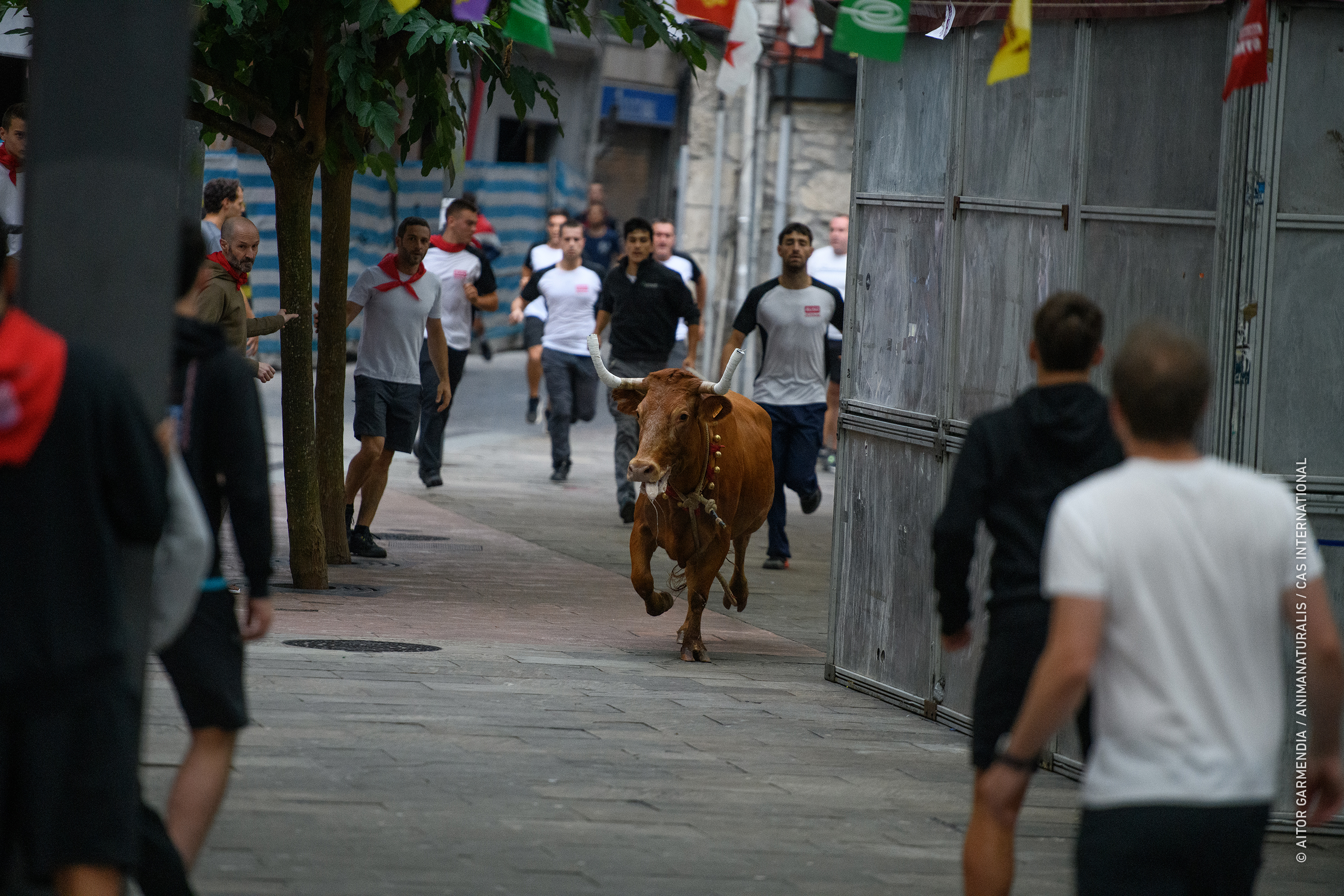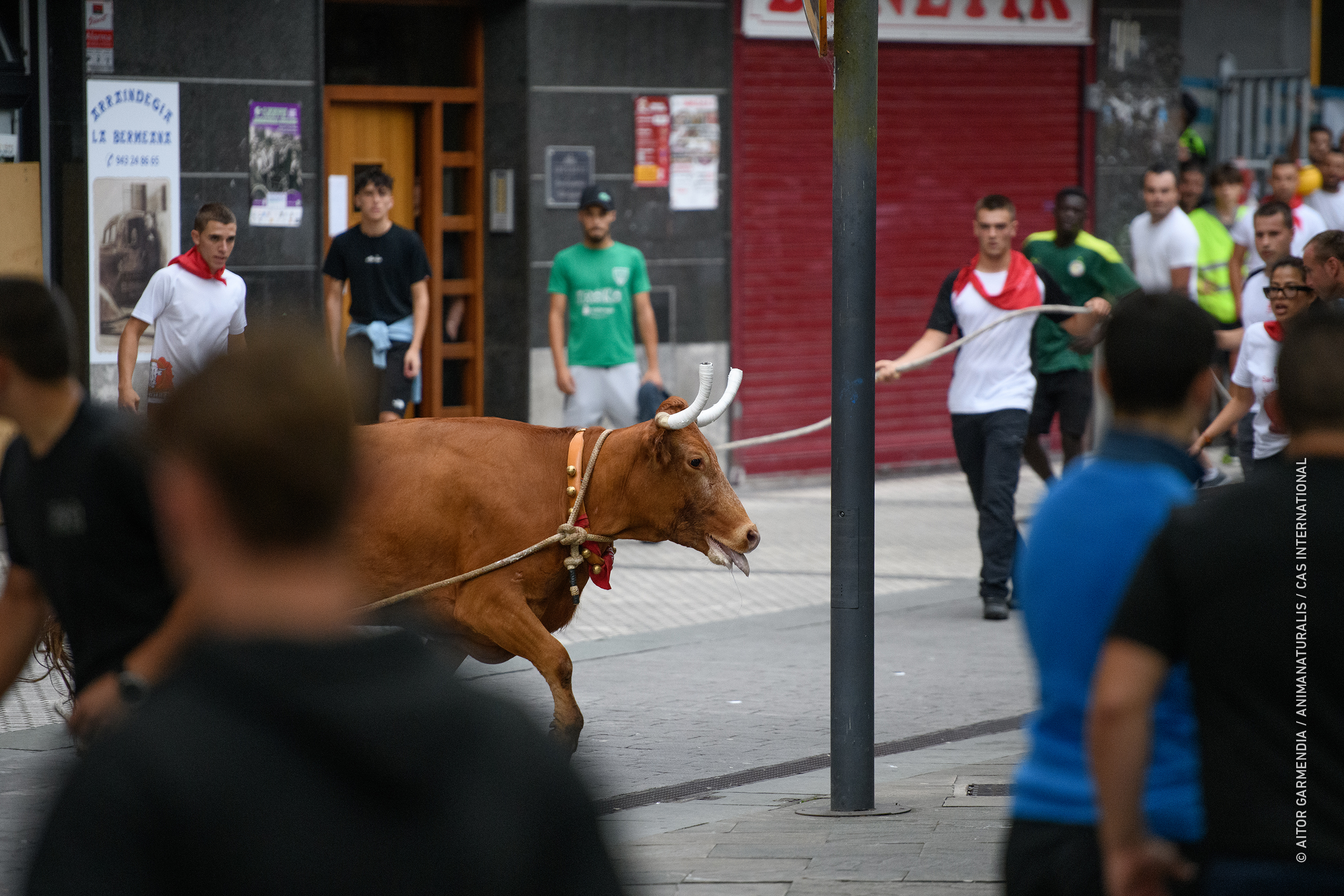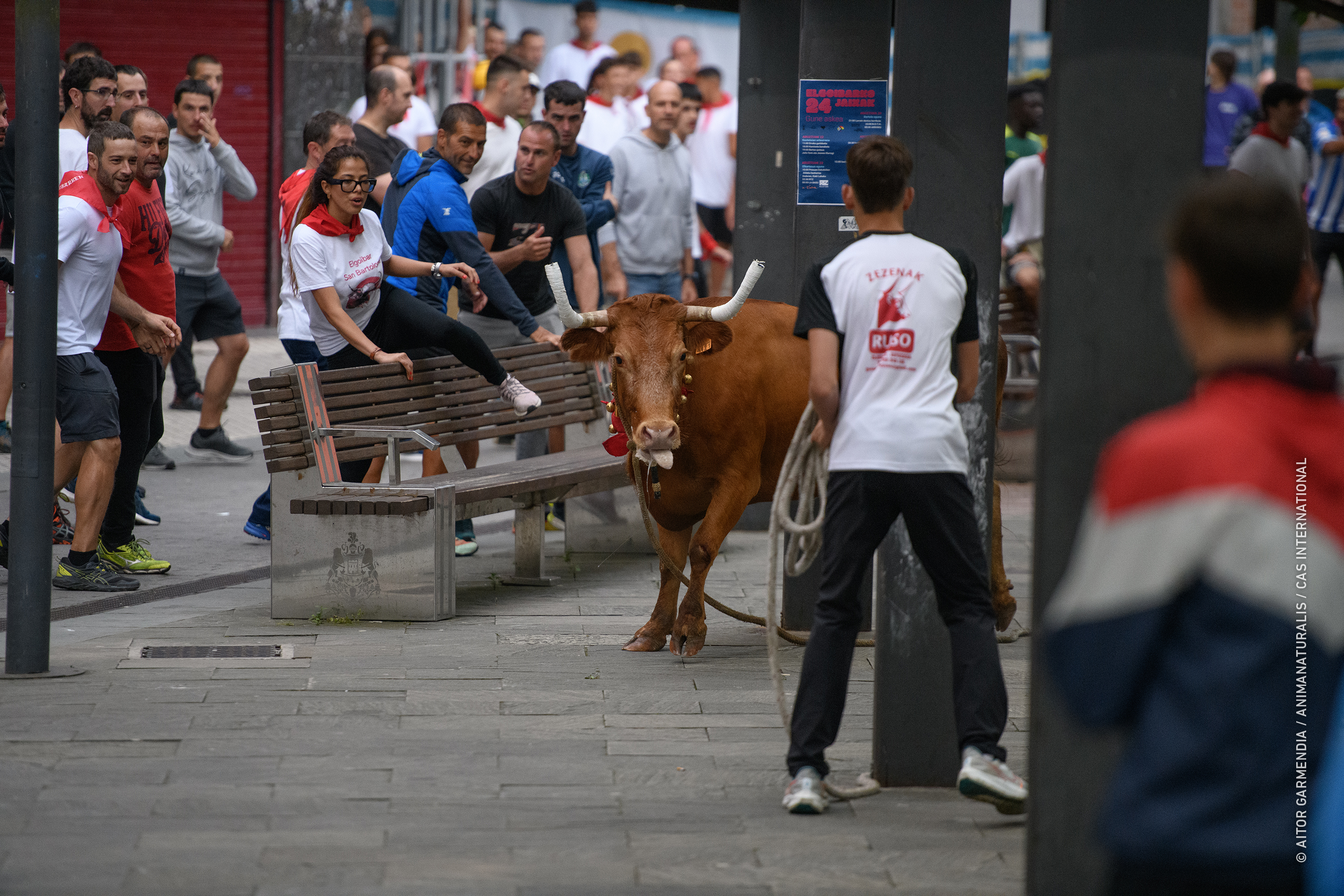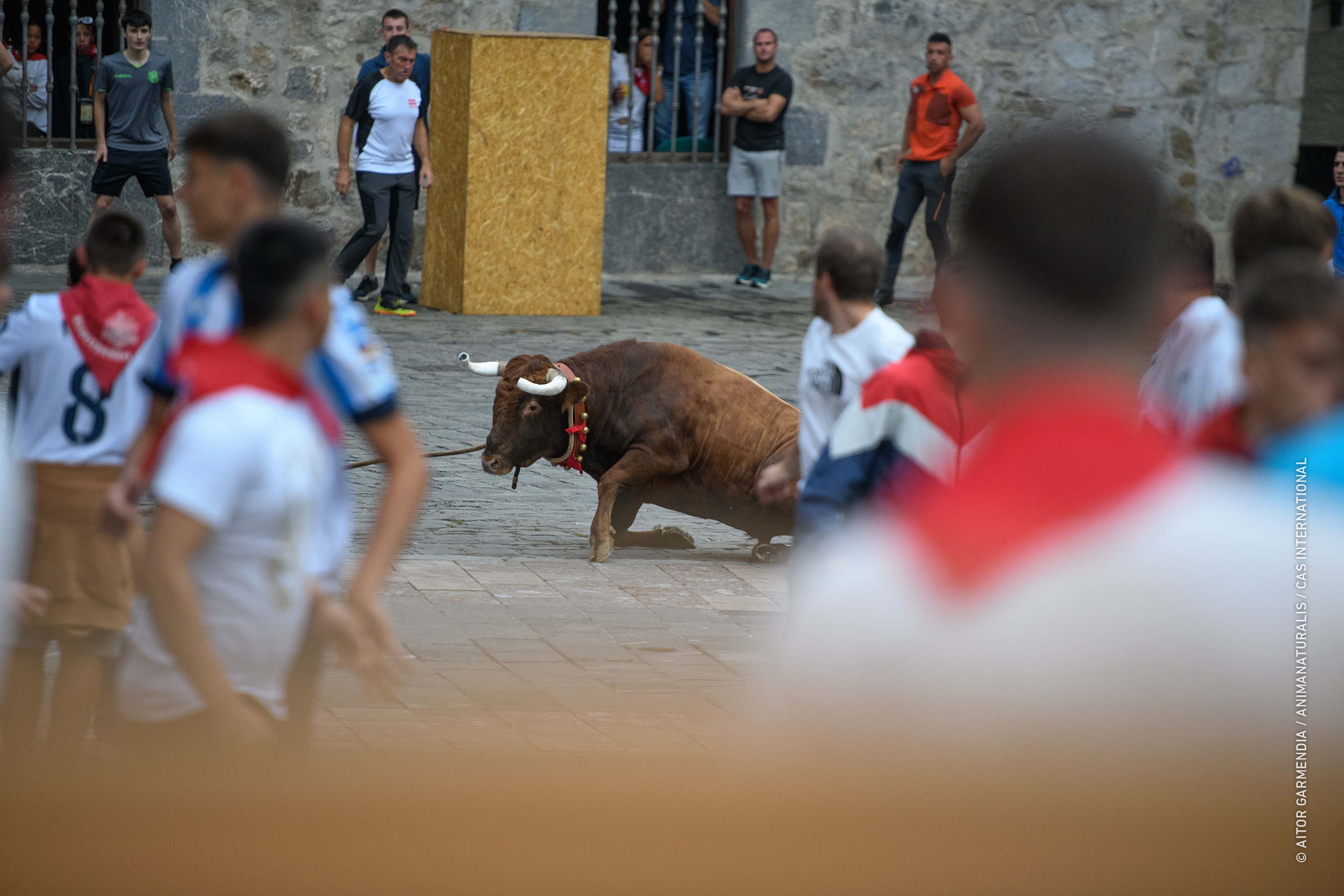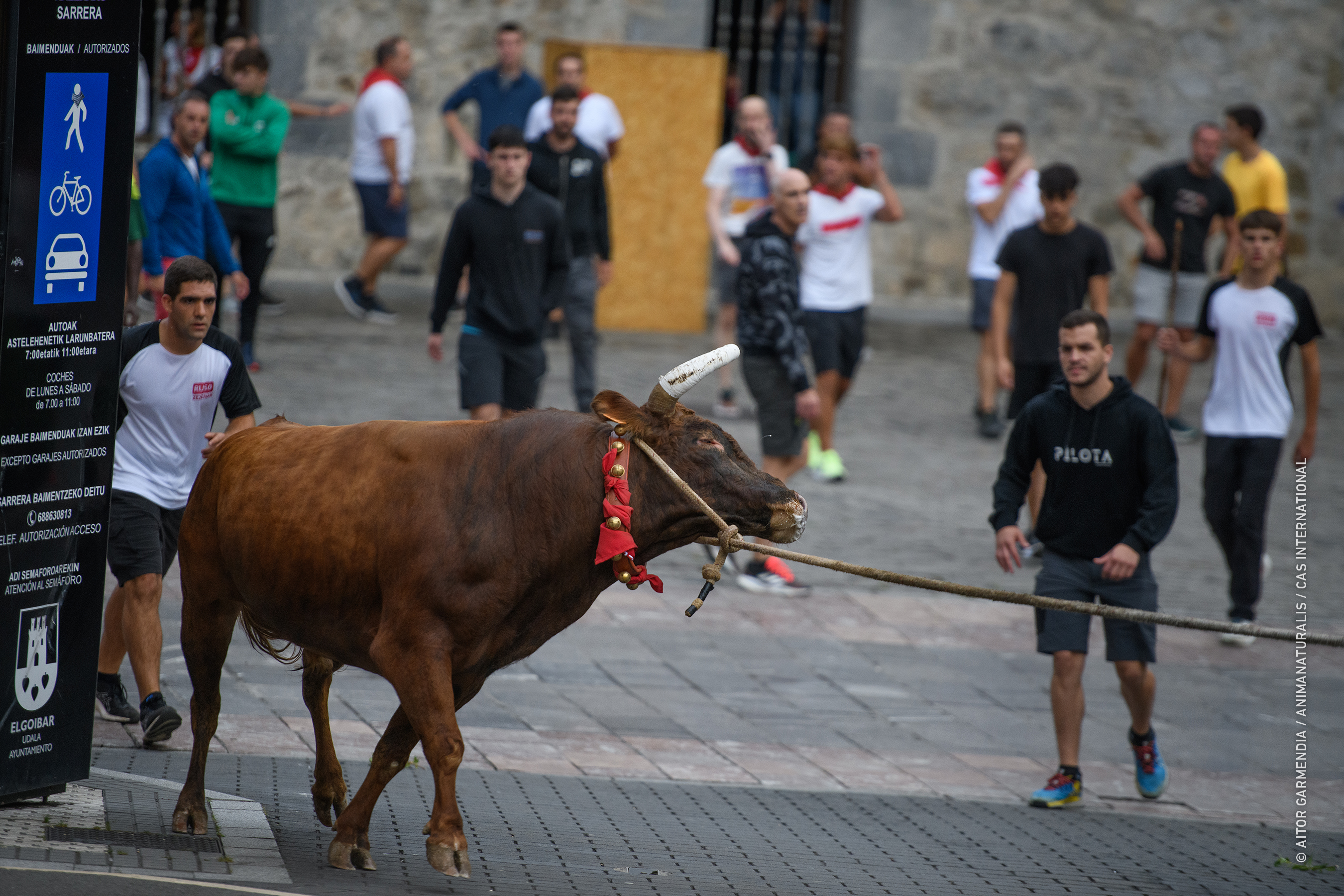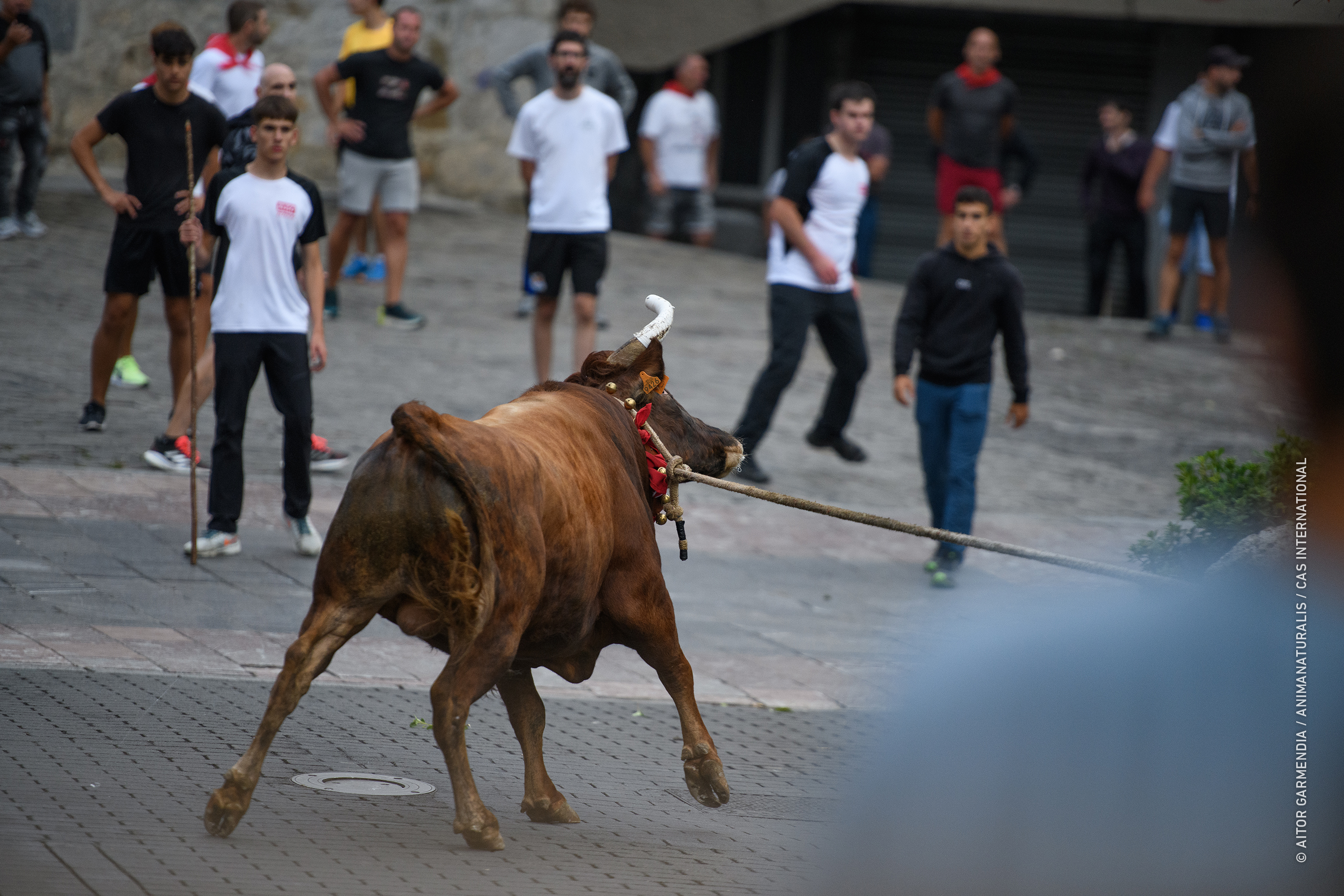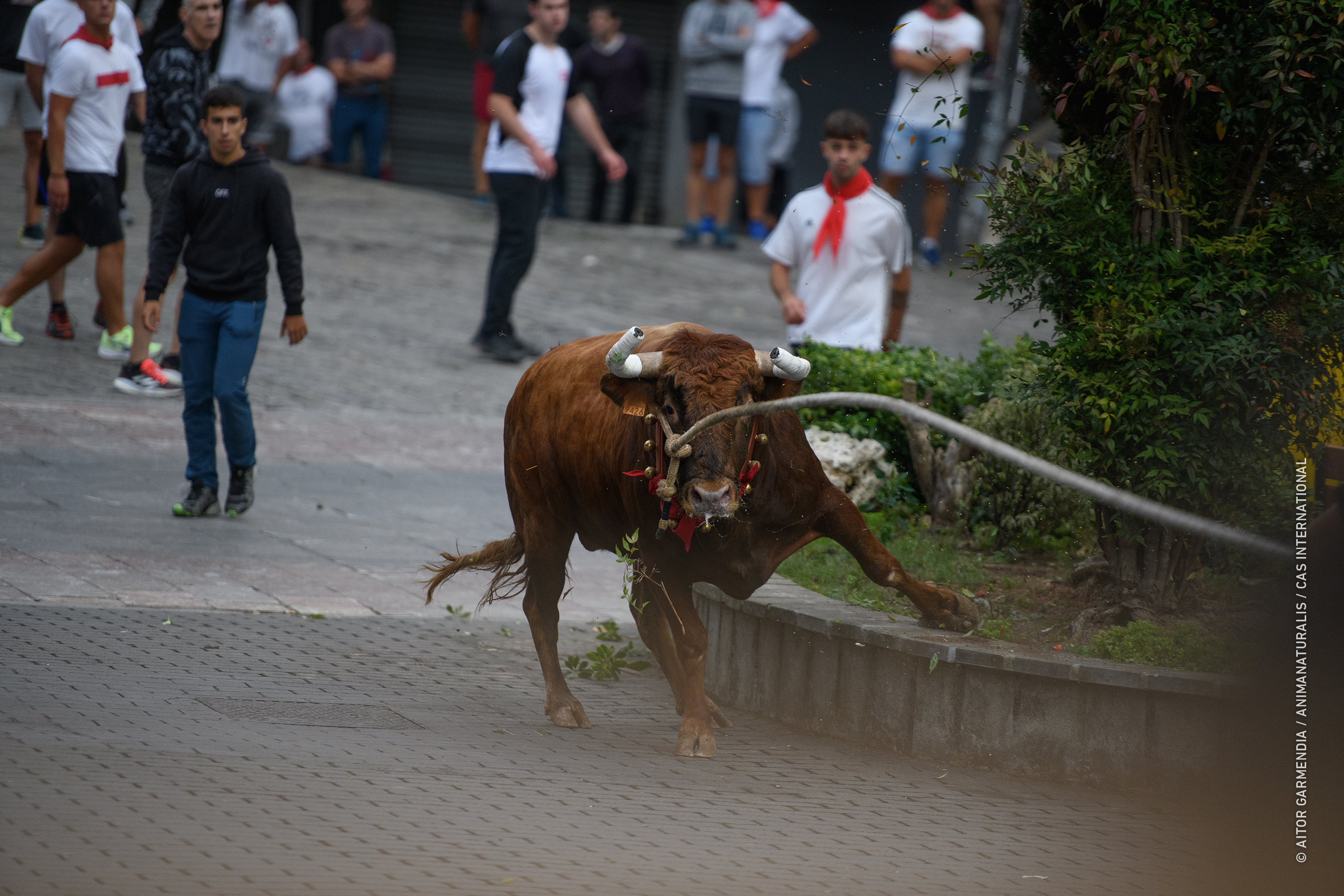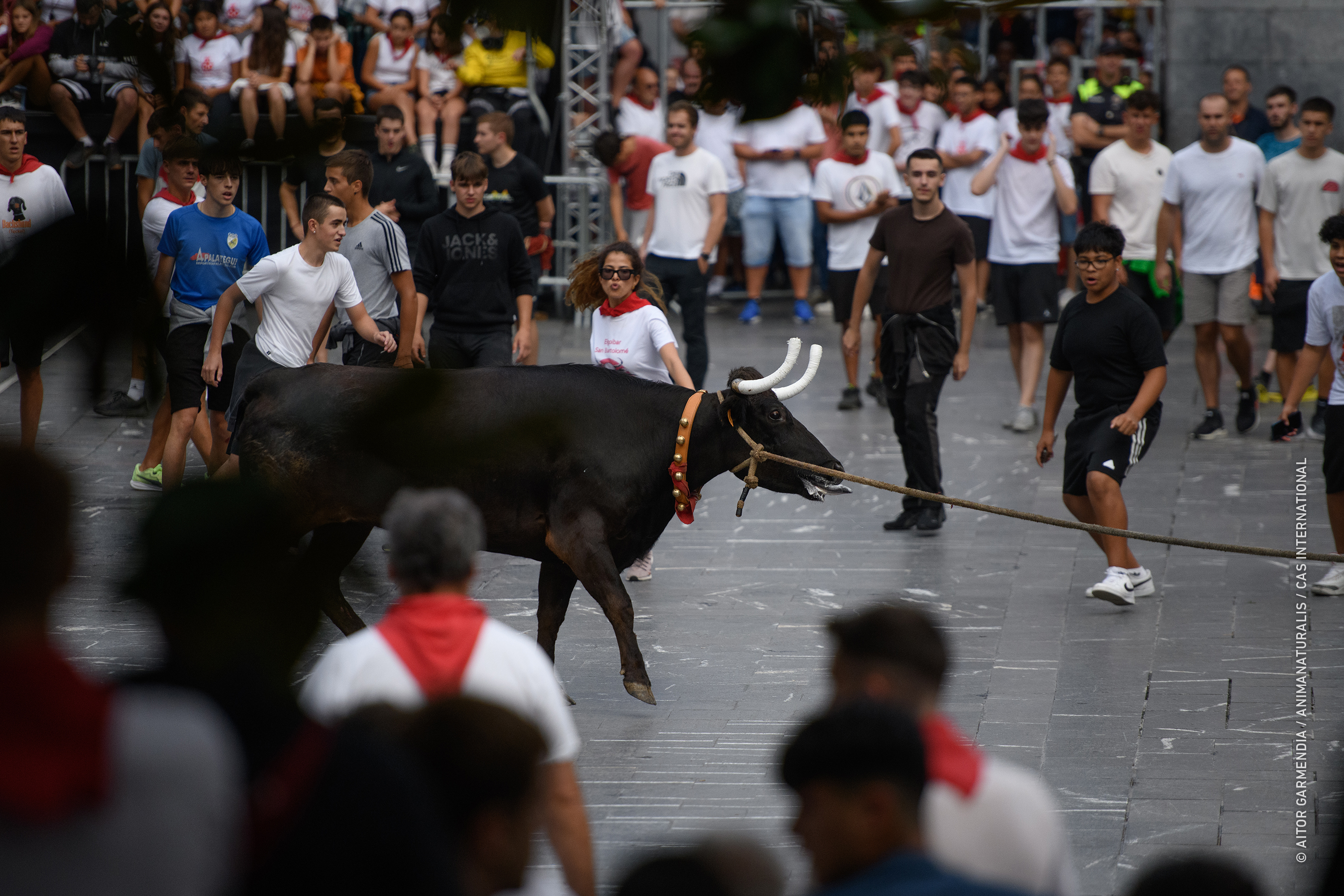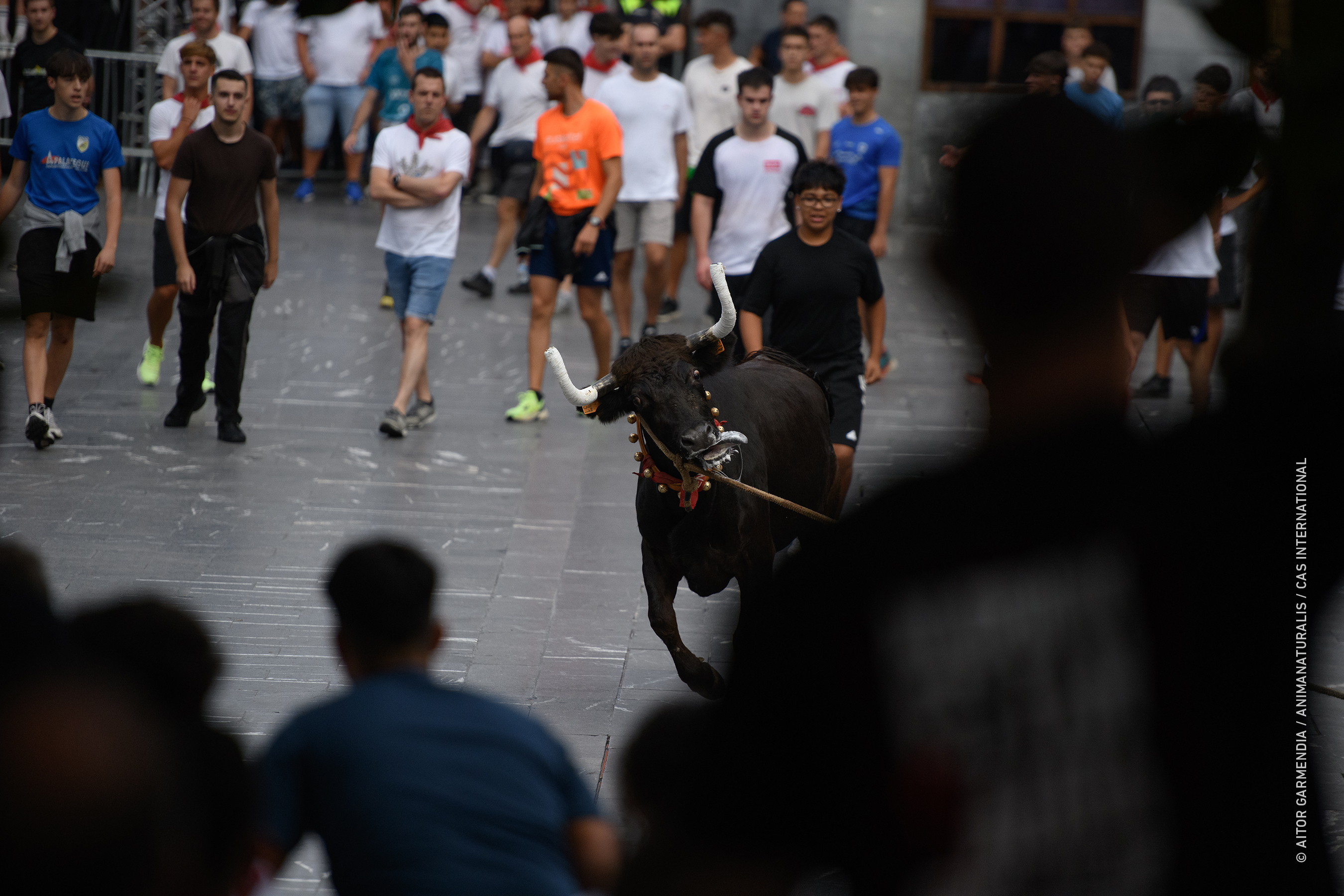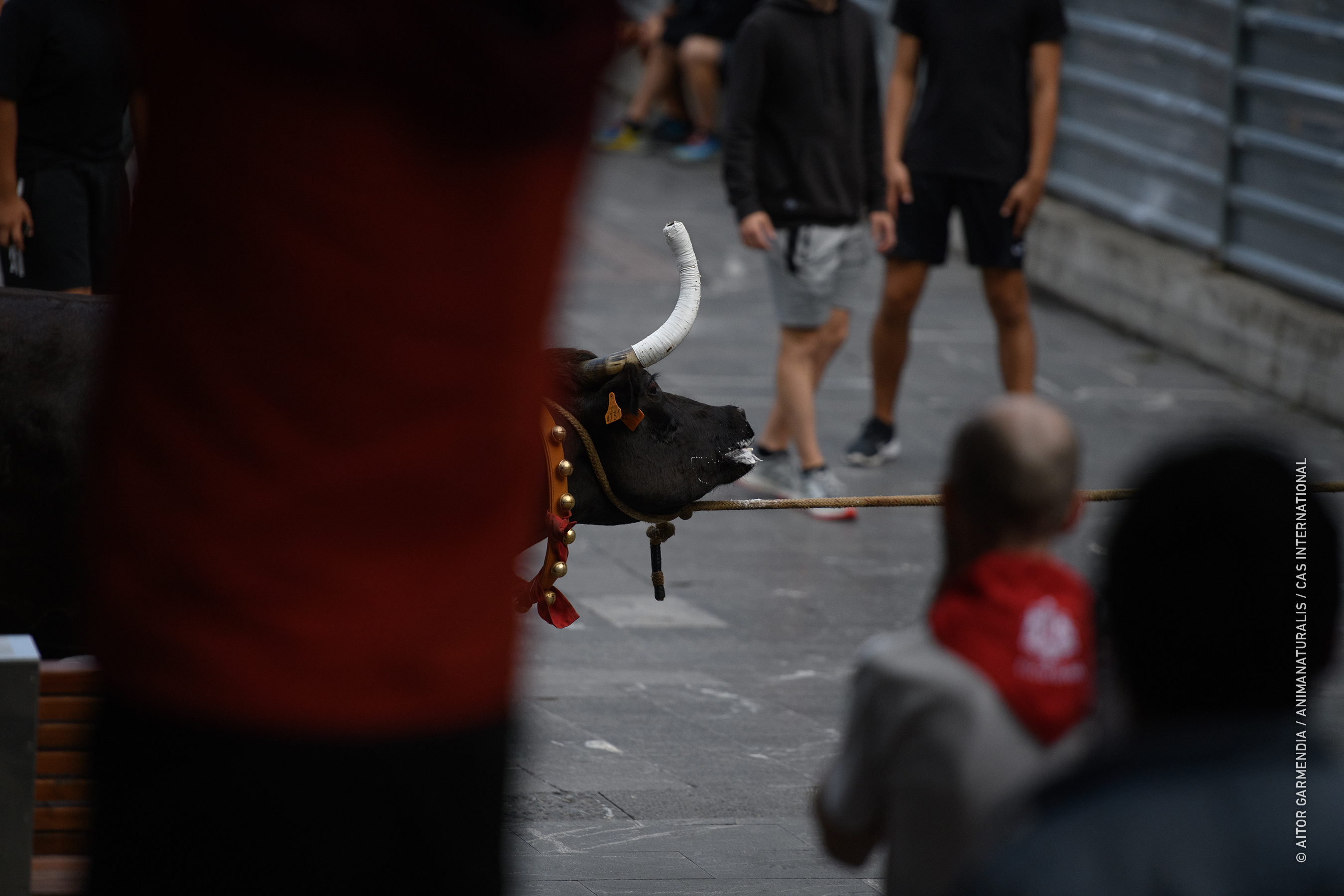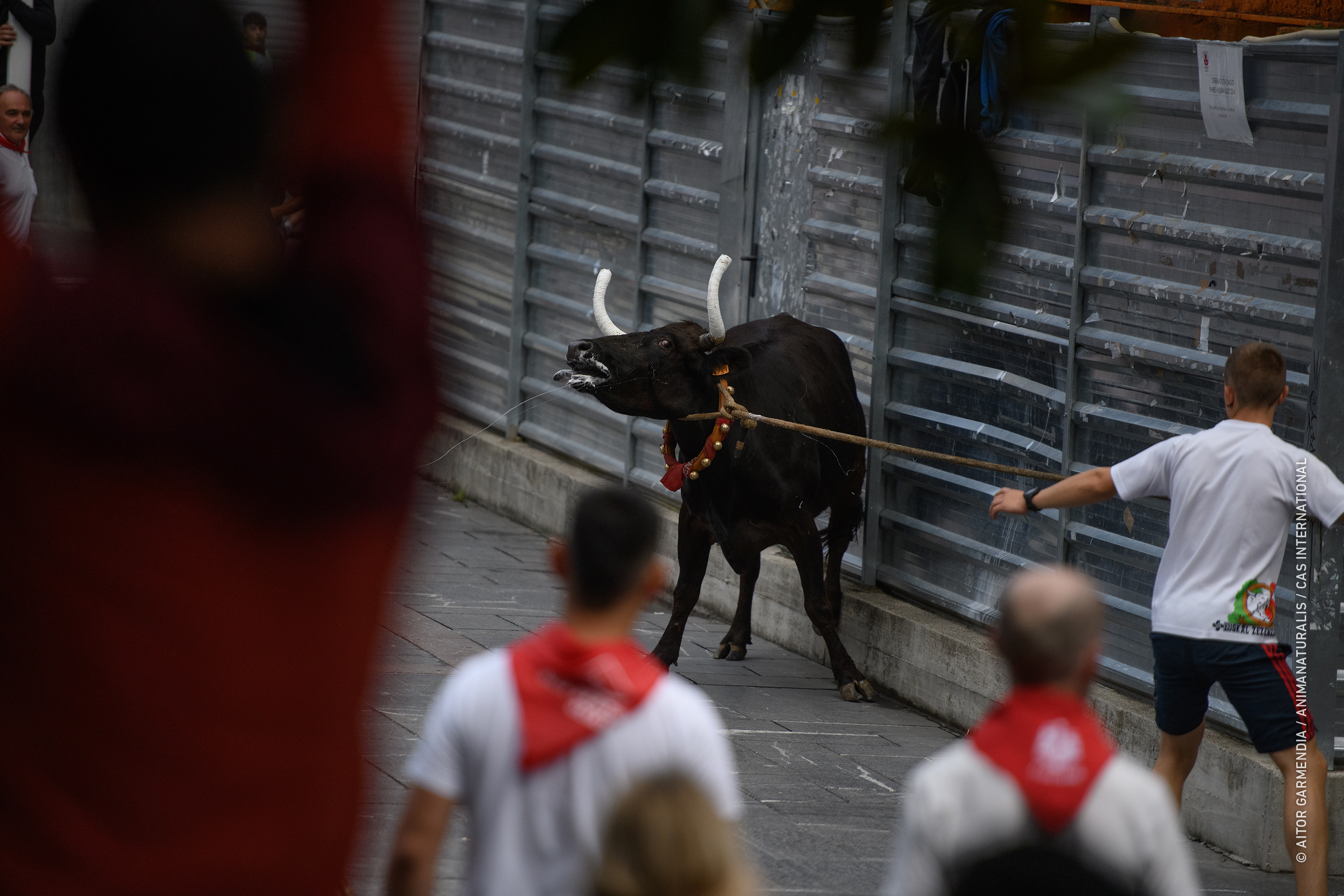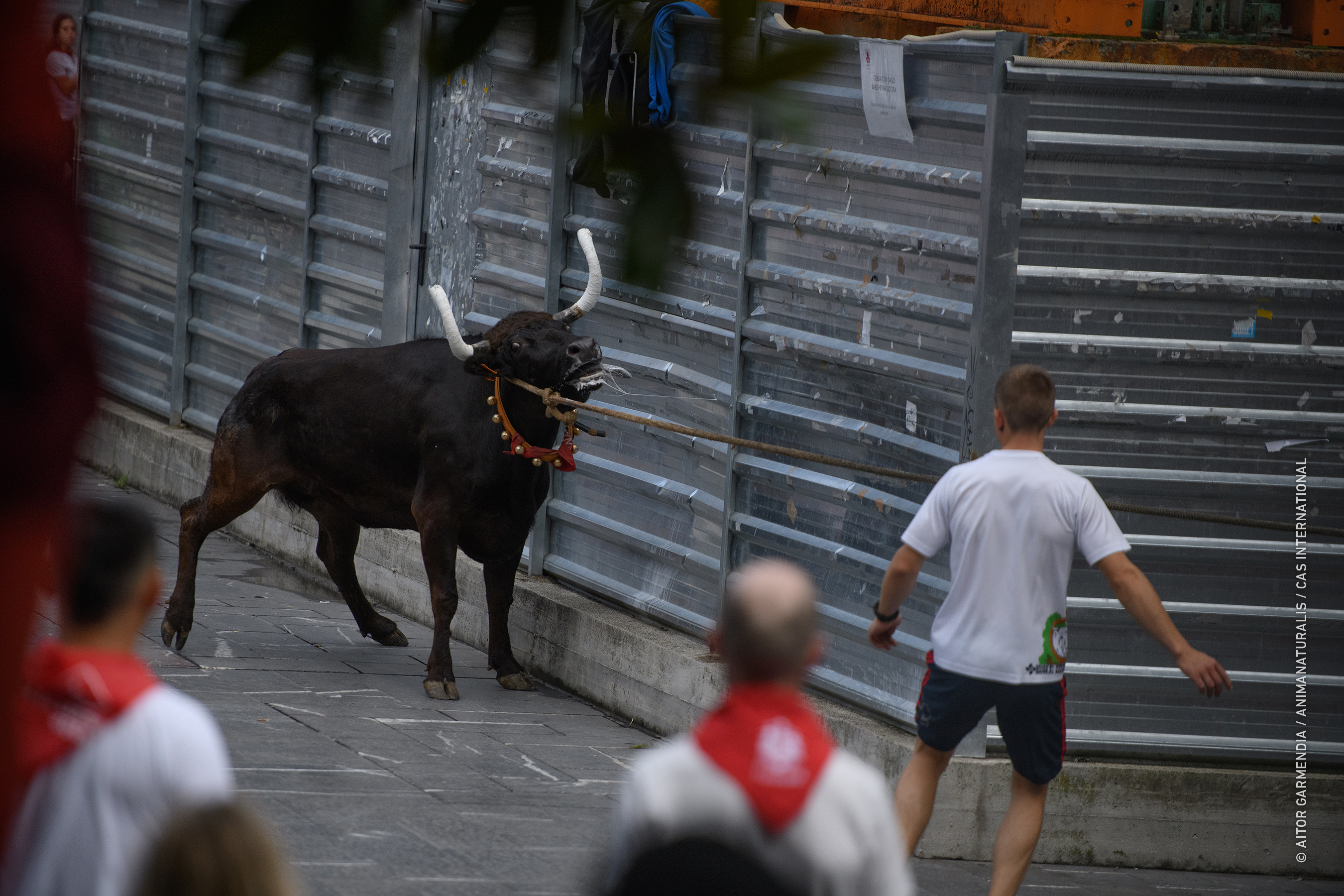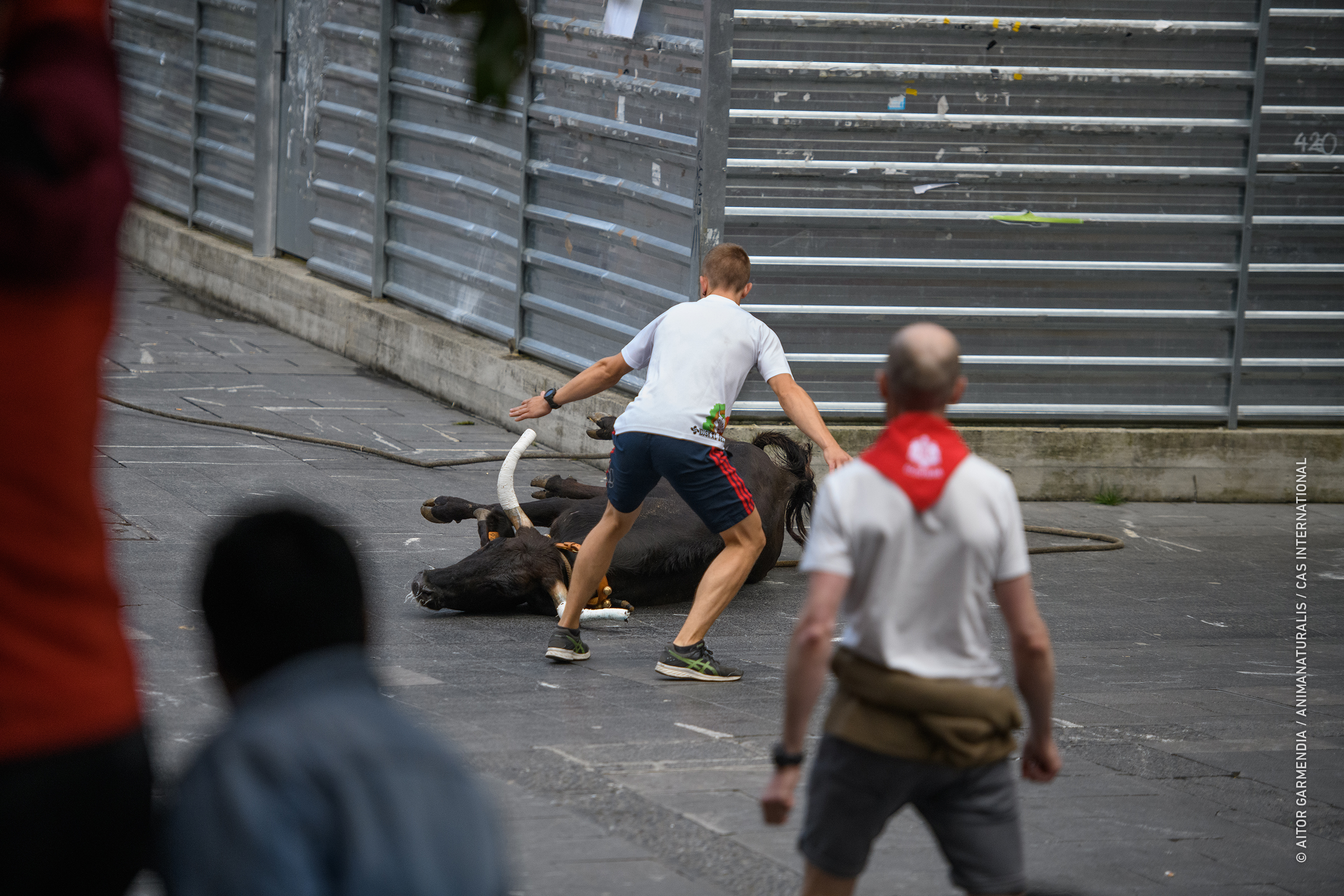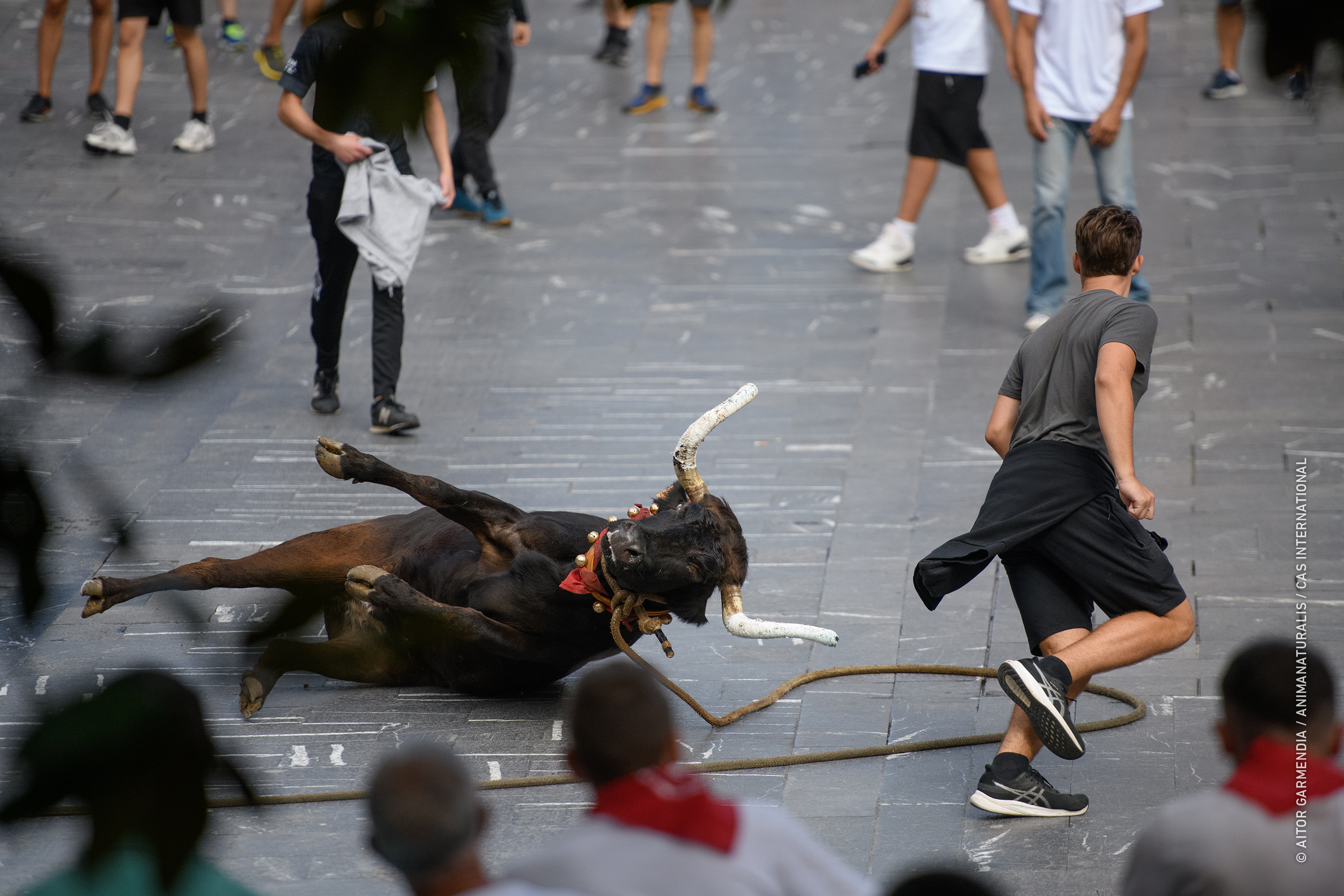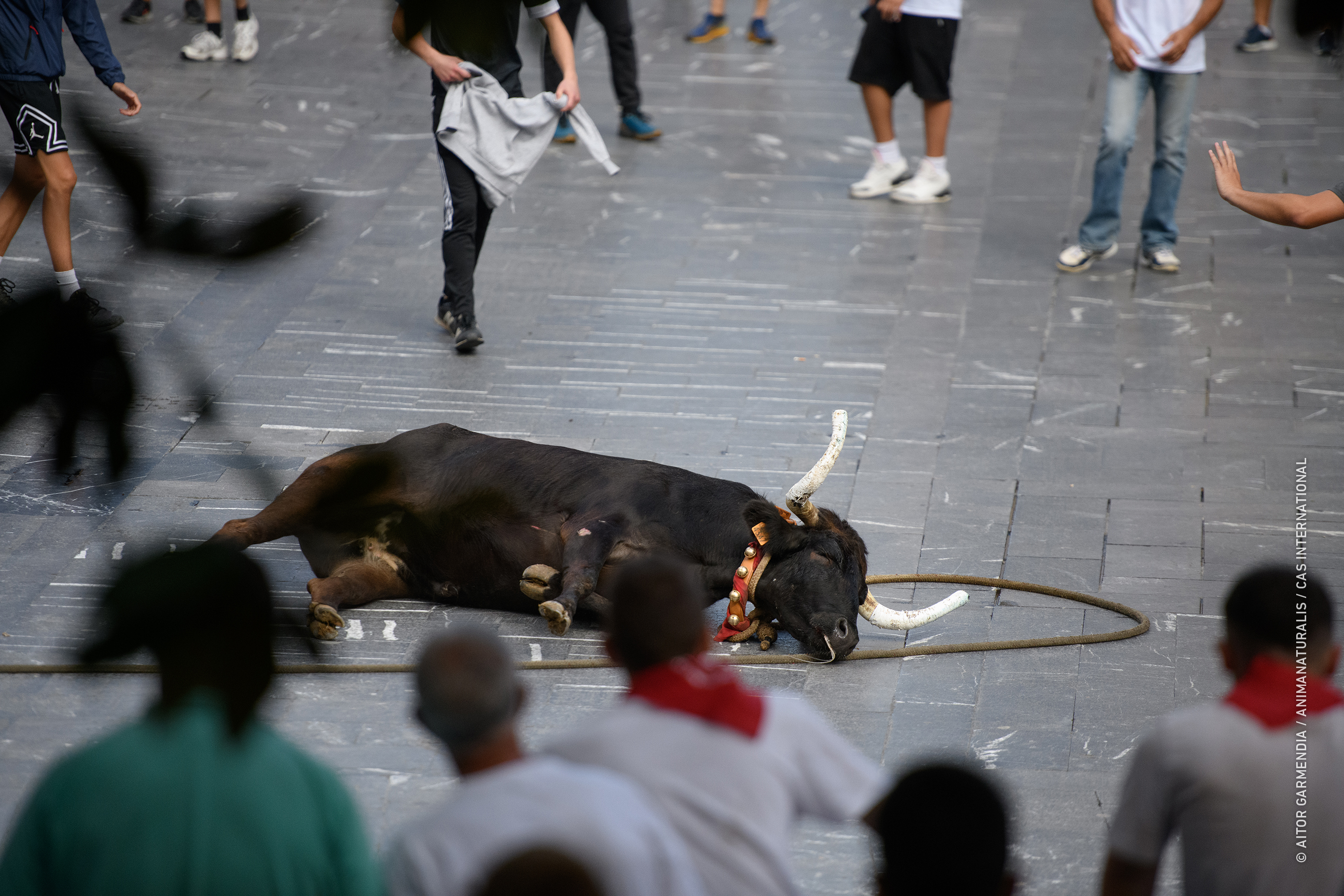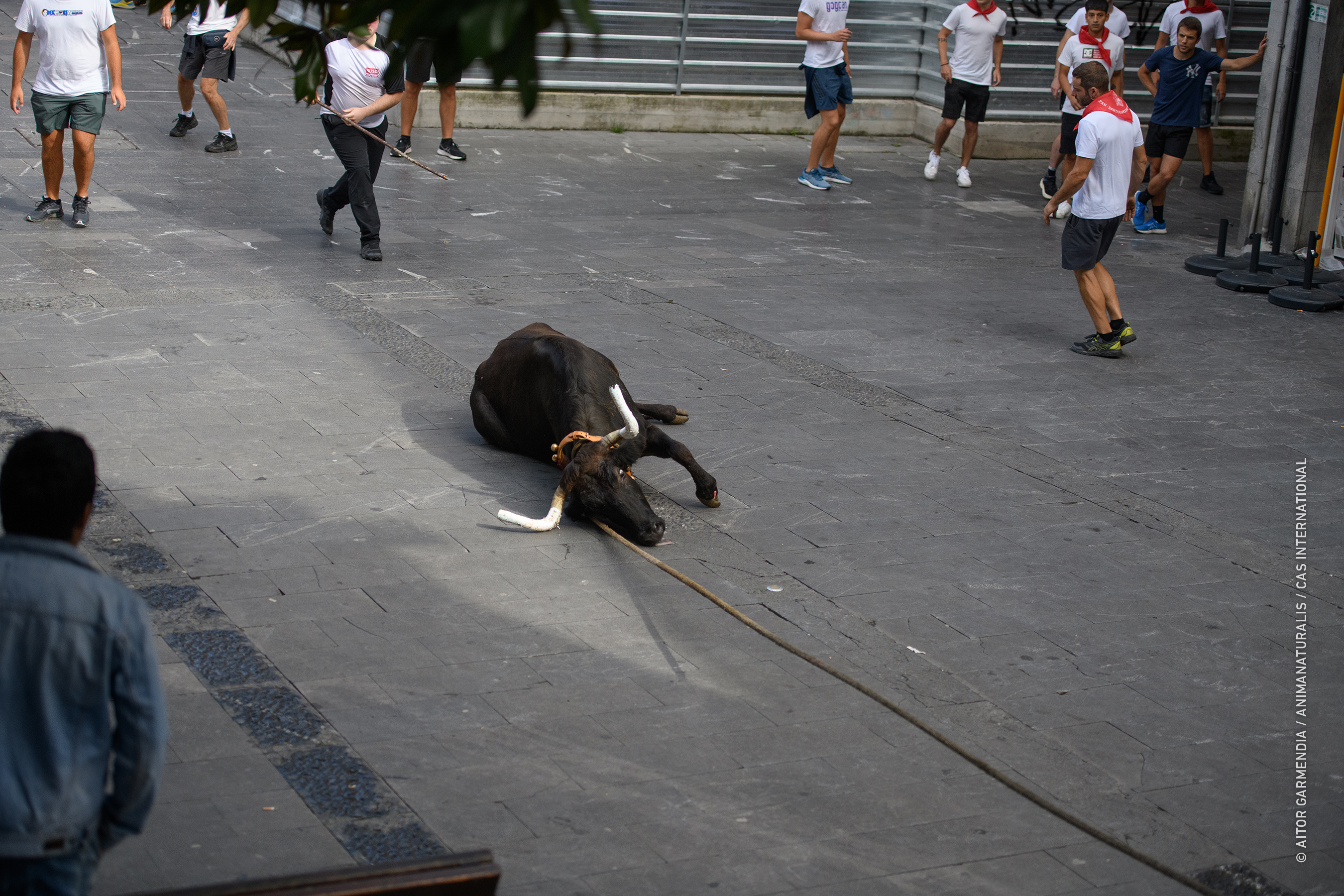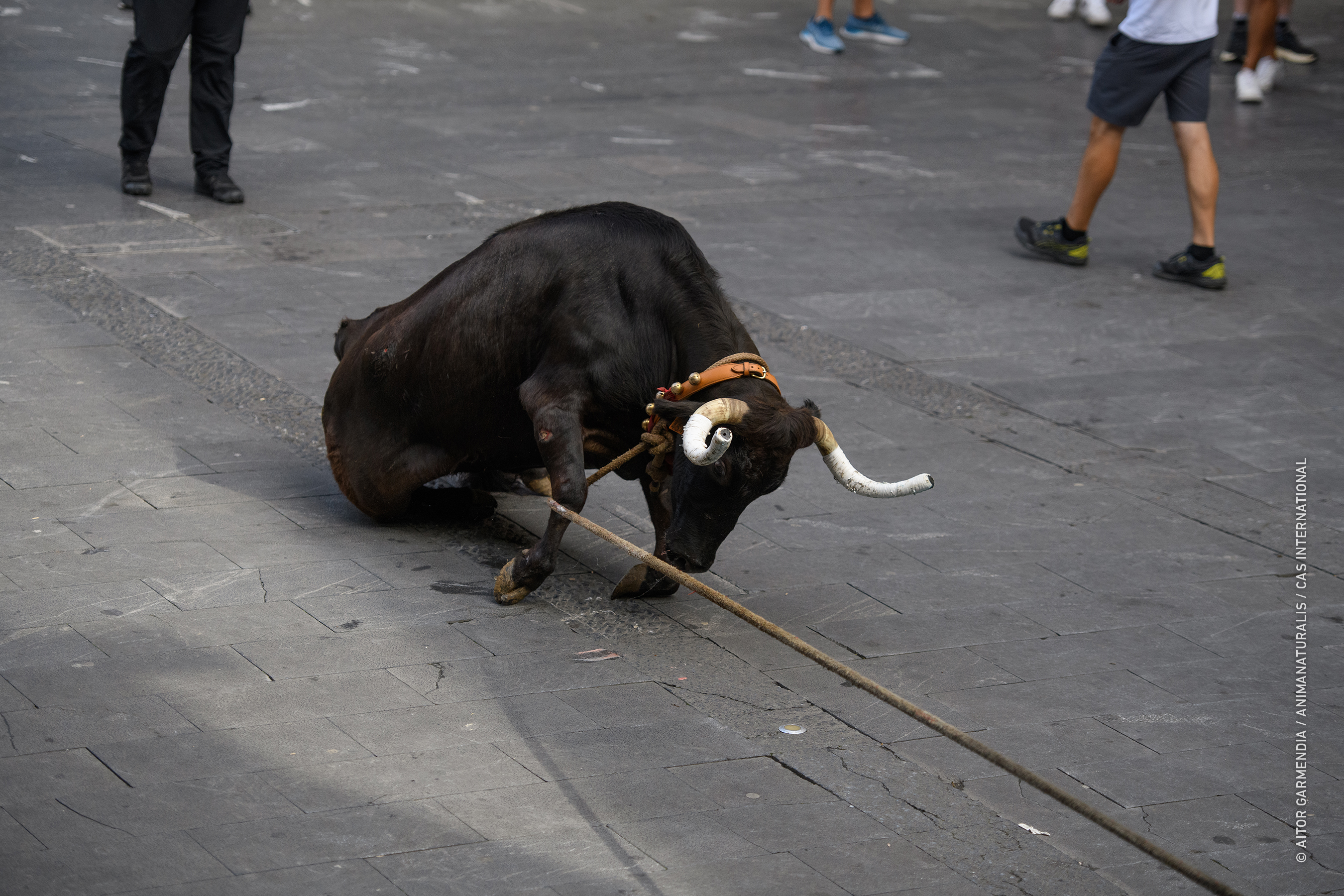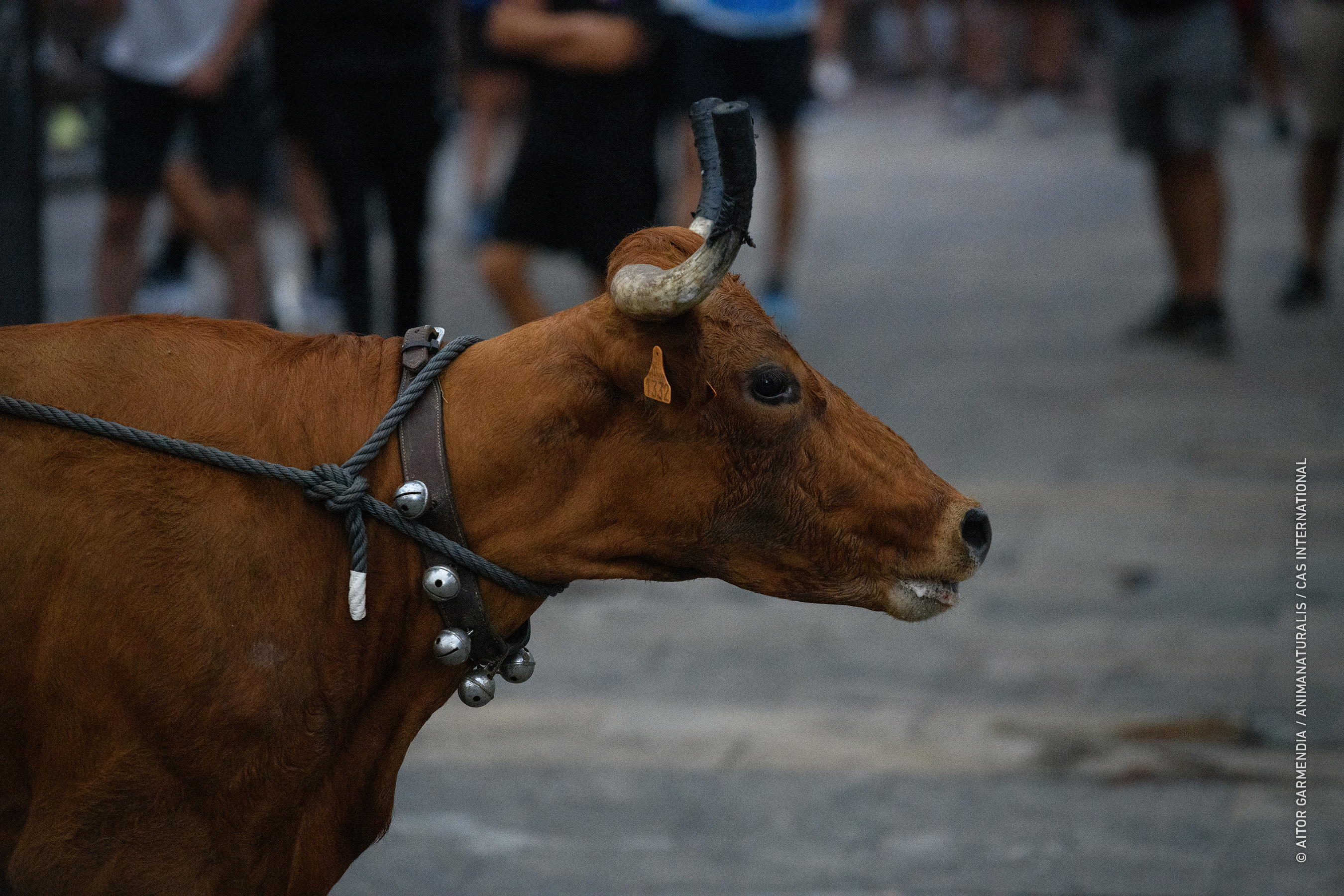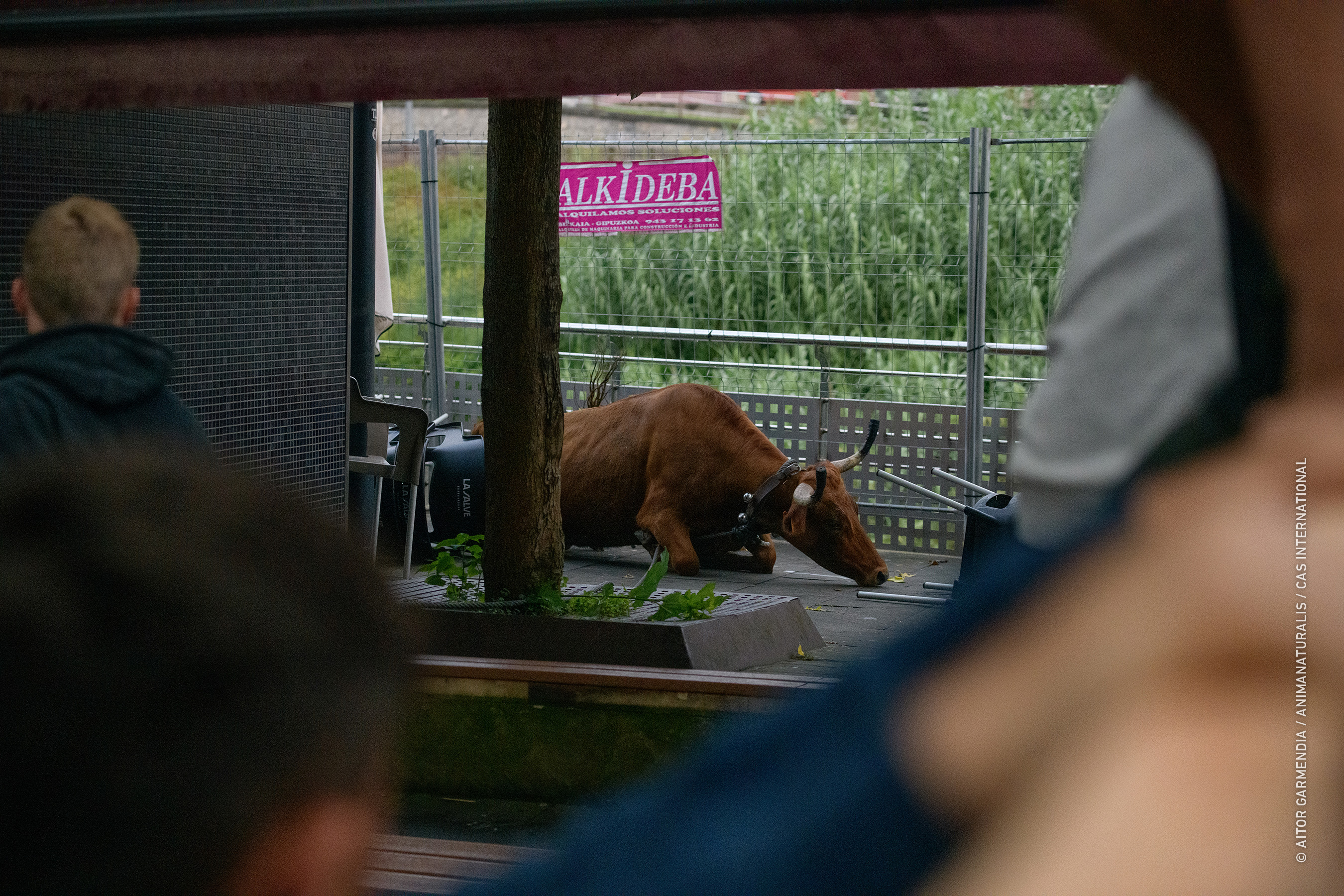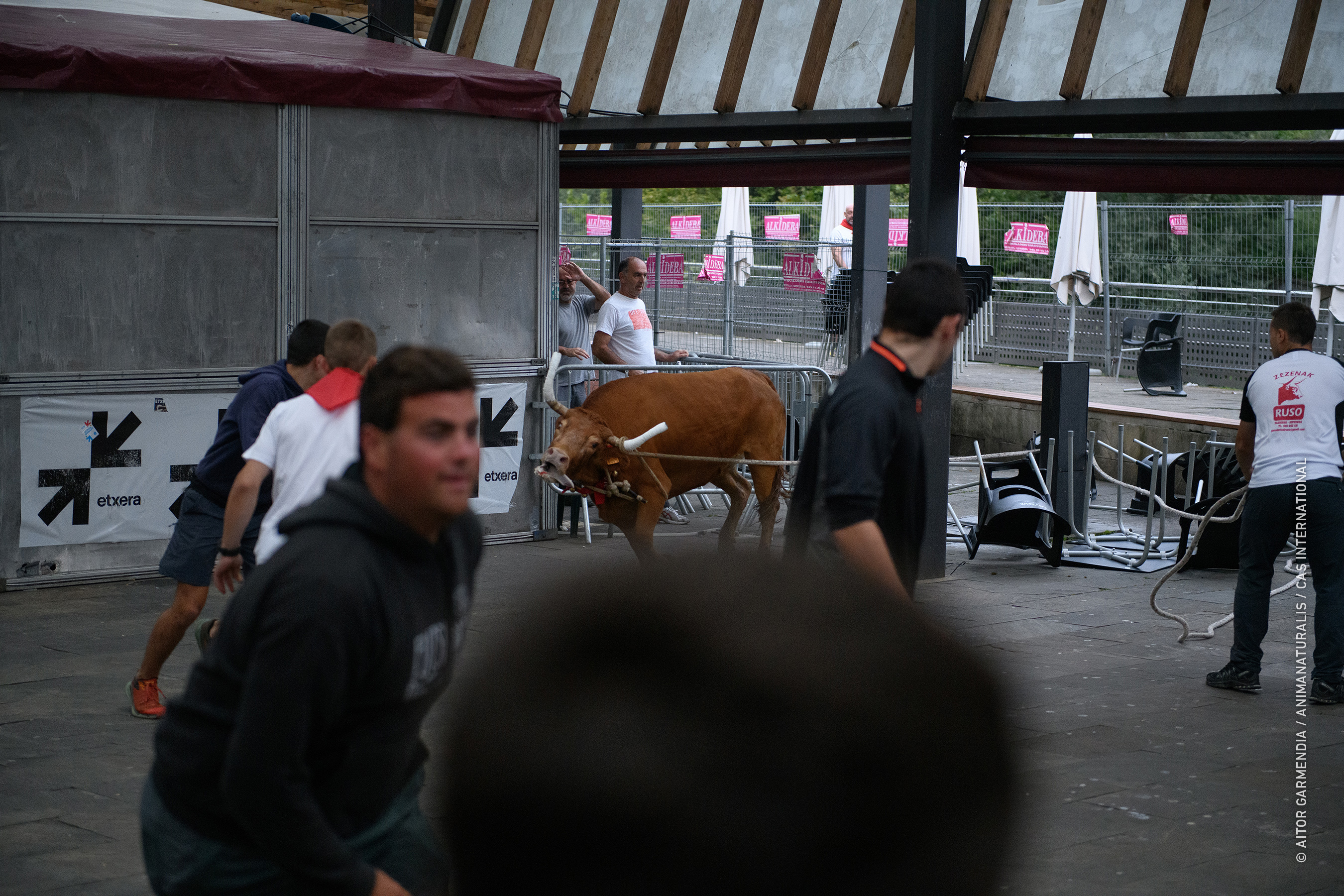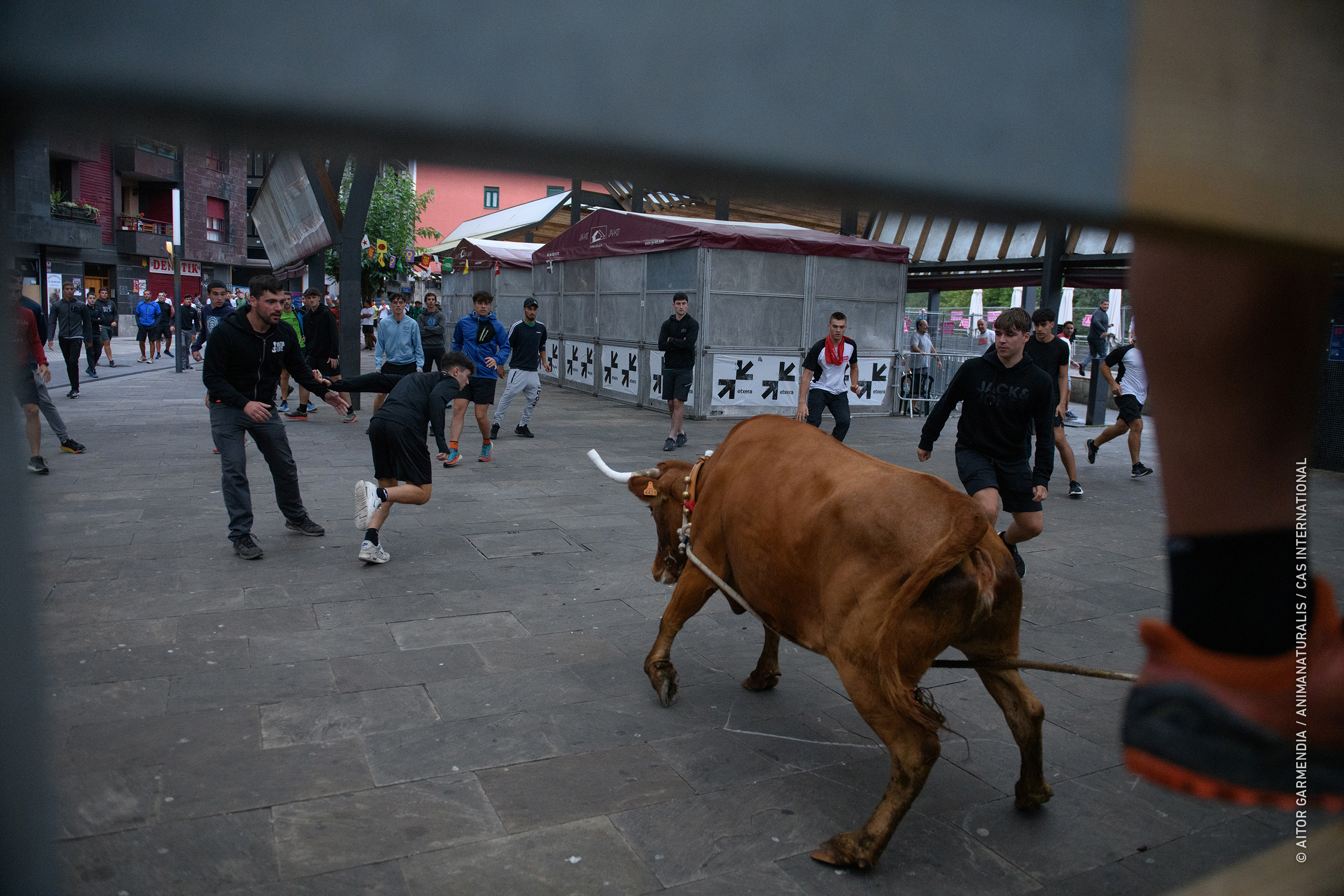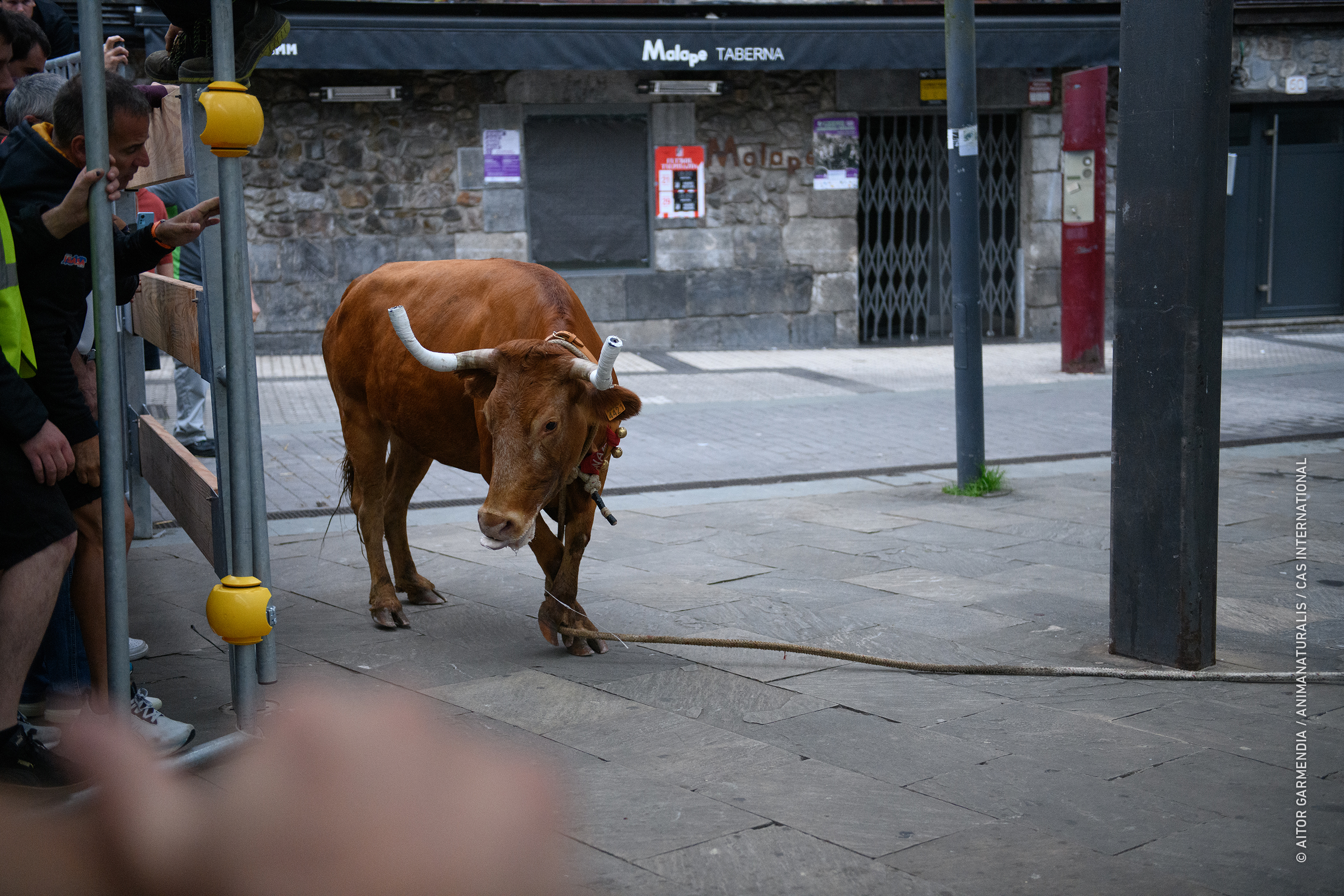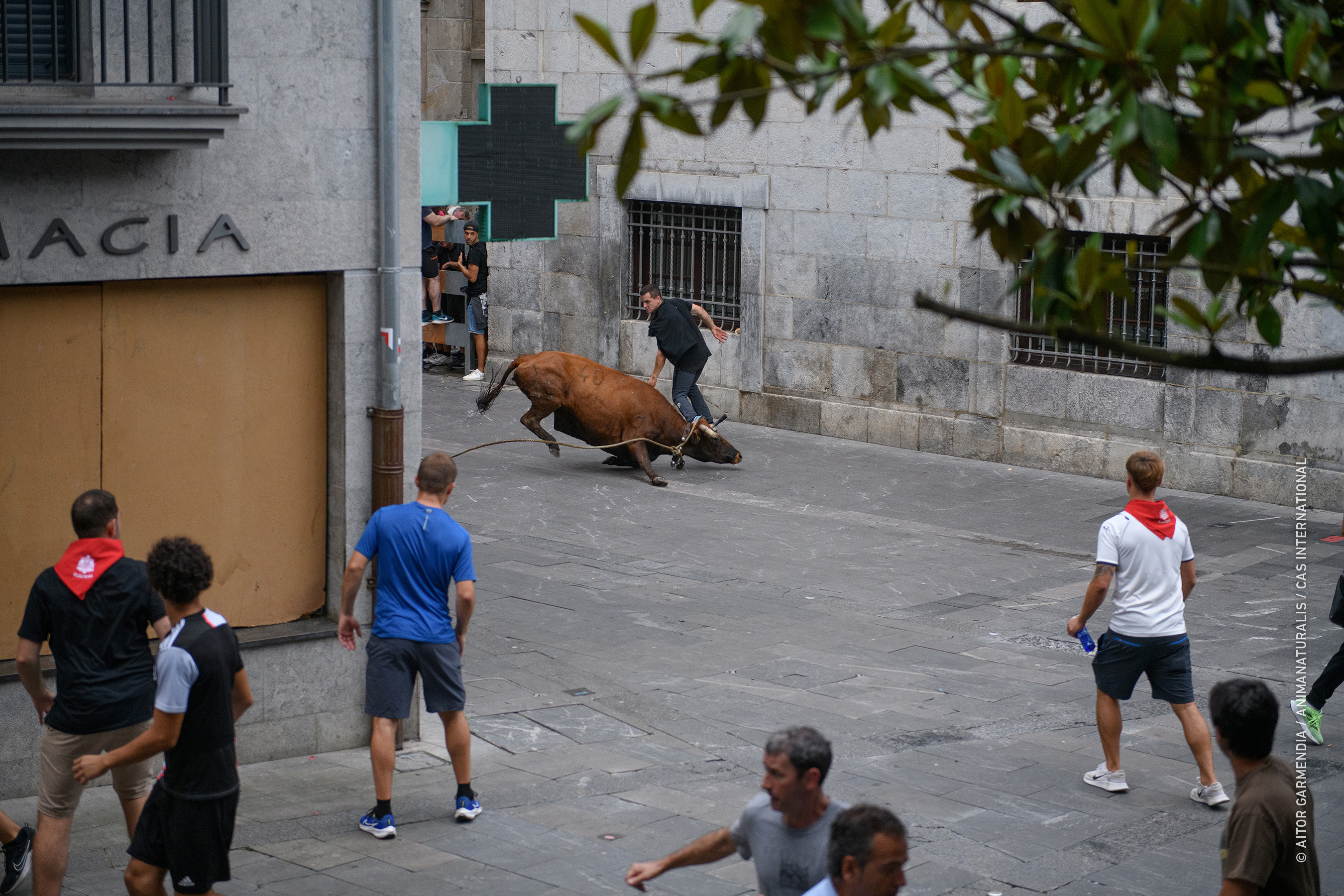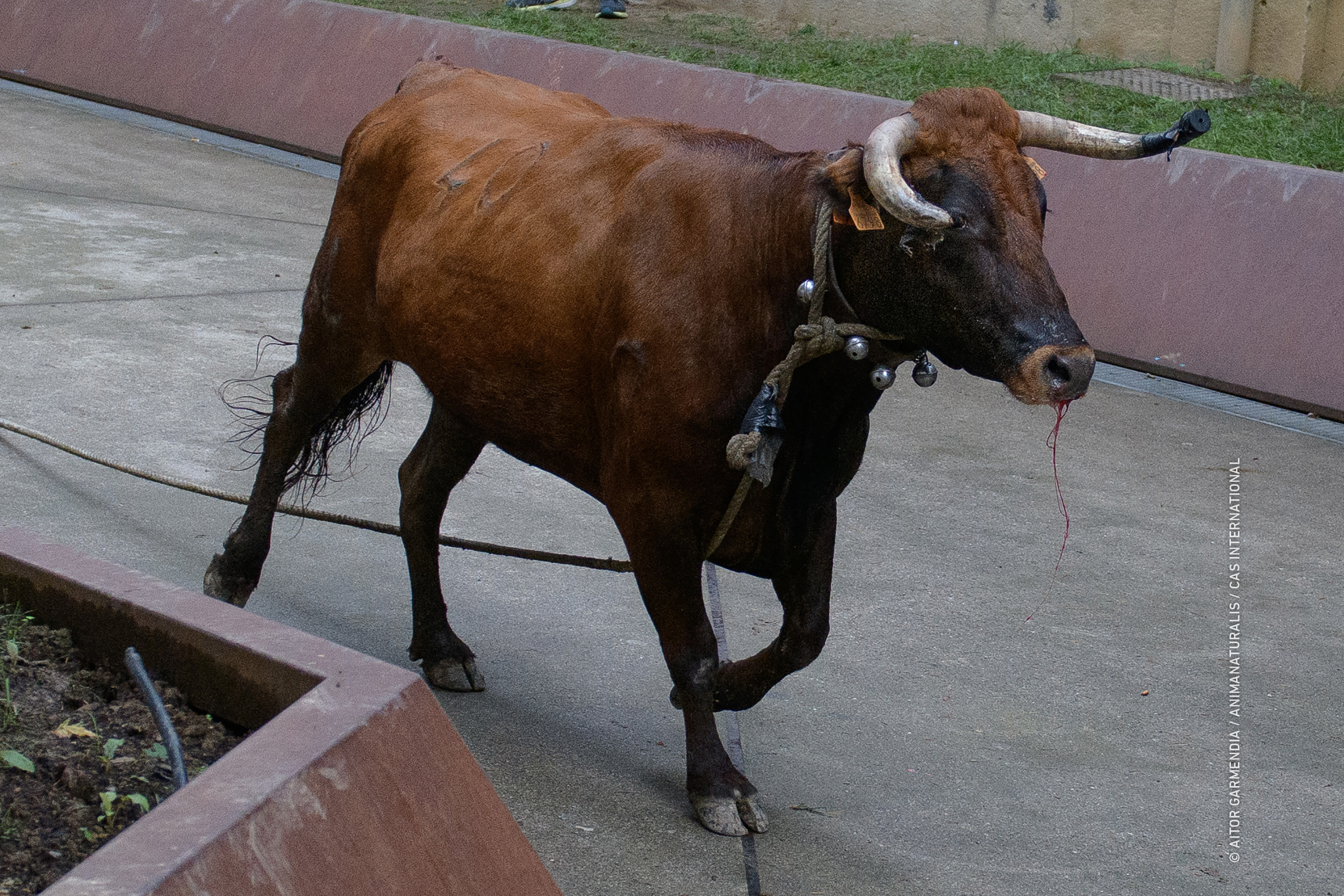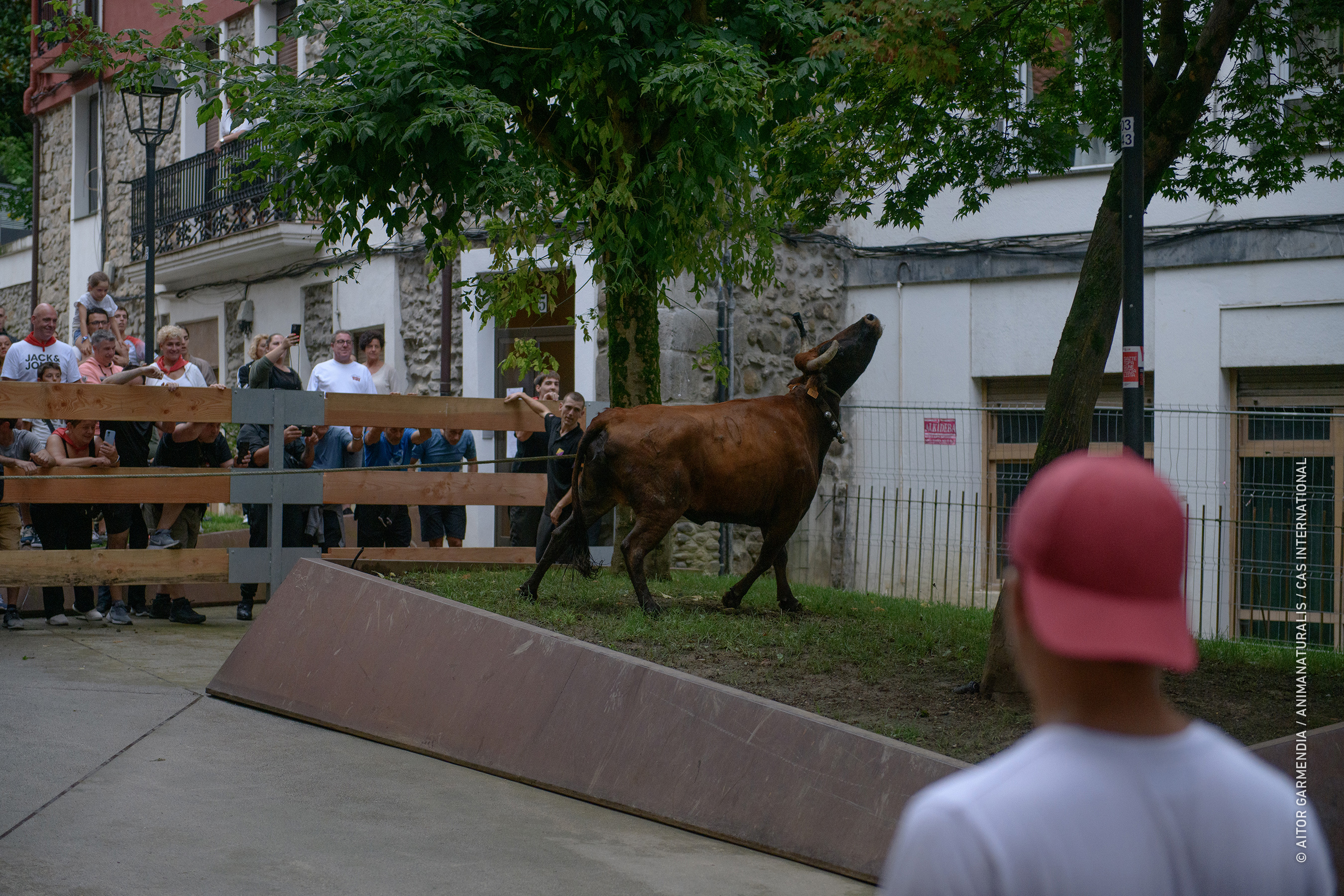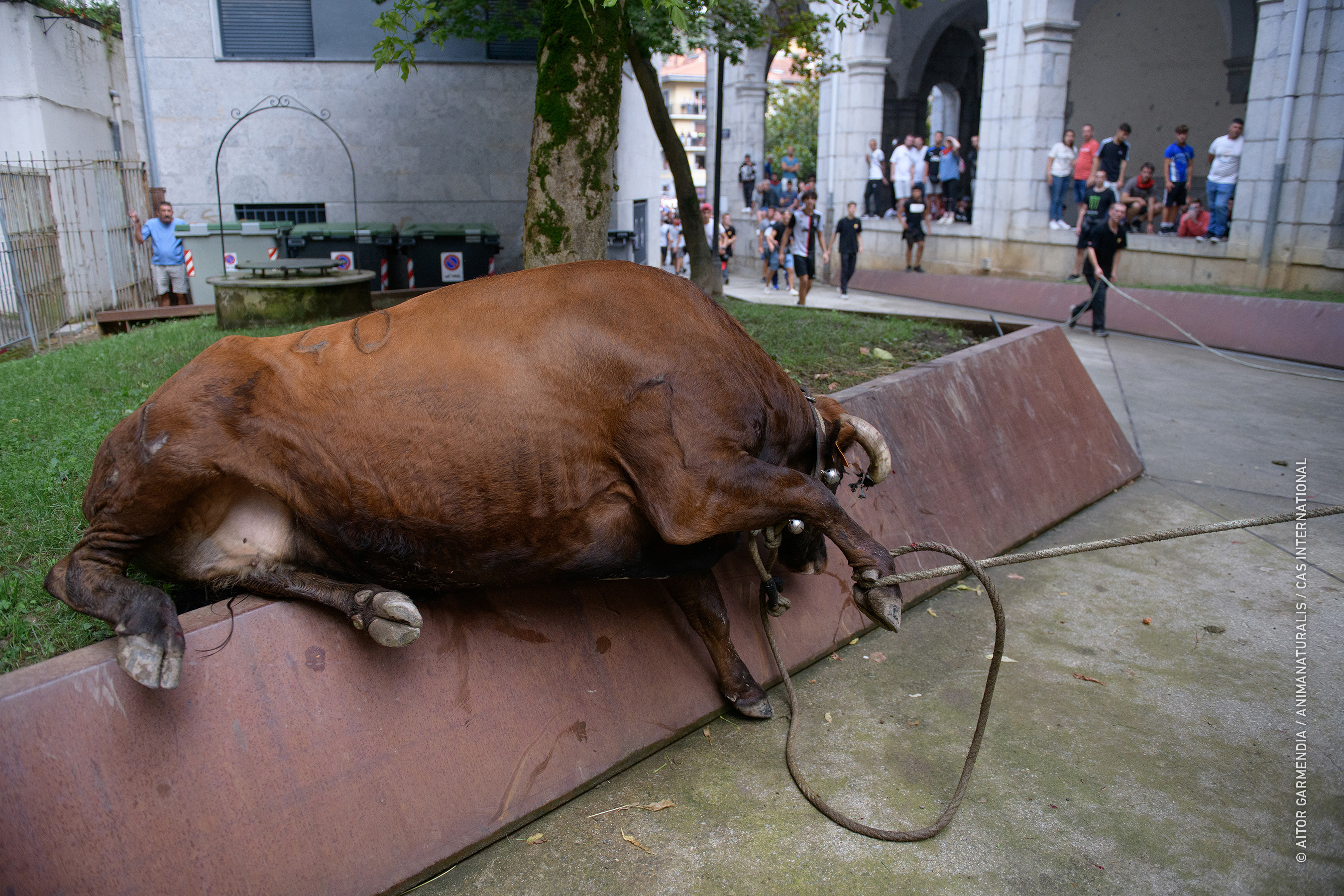Sokamuturra is one of the oldest bullfighting festivities in the Basque Country and is still celebrated in cities such as Elgoibar and Bilbao. The event involves releasing a bull tied with a rope, which is guided by several men while other participants try to dodge the animal in the narrow streets of the town. This type of celebration has been deeply rooted in local culture since at least the 17th century, being an integral part of festivities in many locations.
However, the growing interest in animal welfare has put these kinds of spectacles in the spotlight of organizations such as AnimaNaturalis and CAS International, which argue that such traditions have no place in a society that is moving towards more ethical and respectful treatment of animals. For this reason, our research team witnessed this year's Sokamuturra in Elgoibar.
The Invisible Suffering
Although the bull in the Sokamuturra does not suffer a violent death as in traditional bullfights, the psychological and physical consequences for the animal should not be underestimated. According to scientific studies, bulls subjected to this type of practice experience high levels of stress and anxiety due to confinement, noise, and human manipulation. Moreover, being tied with ropes does not mitigate the risk of injuries, both for the animals and the human participants.
“Sokamuturra, like other bull spectacles, endangers the physical integrity of the bulls and exposes the animals to unnecessary suffering. It is crucial that we stop normalizing the use of animals in festivals where they are subjected to stress and panic,” says Aïda Gascón, director of AnimaNaturalis in Spain.
Despite current regulations requiring certain measures, such as the use of padded horns, recent veterinary reports have highlighted that bulls used in the Sokamuturra suffer significant physical and emotional stress. According to the report from the Association of Veterinarians for the Abolition of Bullfighting and Animal Abuse (AVATMA), the animals face falls, blows, slips, and entanglements in the ropes, which can cause severe trauma.
Bulls subjected to Sokamuturra exhibit clear signs of stress and physical exhaustion. Scientific studies have shown that these animals suffer from what is known as lactic acidosis, a condition that occurs when their muscles cannot properly use oxygen, leading to a buildup of lactic acid. This phenomenon, caused by the extreme exercise they are subjected to, results in intense muscle pain, severely affecting their well-being.
“It is clear that these bulls are not physiologically prepared to withstand this type of exercise. Their body's defense mechanisms are overwhelmed, leading to a state of exhaustion and suffering,” explain the veterinarians who authored the report. Additionally, elevated liver and kidney function markers were detected, another clear indicator of prolonged suffering during the event.
Emotionally, the bulls display unmistakable signs of fear and anxiety, such as pawing the ground, tail flicking, and constant attempts to escape. Many animals reused in these events develop chronic fear, intensified by their previous experiences of mistreatment.
The situation faced by bulls in the Sokamuturra violates several principles established in the so-called "Five Freedoms of Animal Welfare," a set of internationally recognized guidelines since 1967. These freedoms include relief from pain, fear, discomfort, and suffering, all conditions that, according to scientific and veterinary studies, are not respected in these events.
“Sokamuturra, like other bull spectacles, represents a direct violation of animal welfare. It is time for society to move towards forms of entertainment that do not involve the mistreatment of living beings,” says Gascón.
Towards a Culture Without Cruelty
In many cities, such as San Sebastián, authorities took a step towards the future by banning these events in the 20th century, although in other locations, these traditions have been revived. Fatal accidents, both of bulls and humans, were one of the main reasons that led to the initial ban, but animal advocates today add another dimension: respect for life and animal welfare.
“The abolition of these spectacles would not only prevent tragic accidents but also send a clear message about the kind of society we want to be: one that respects animals and rejects cruelty disguised as tradition,” states Gascón.
The debate surrounding Sokamuturra and other bullfighting festivities highlights a cultural conflict between those who wish to preserve traditions and those who fight for animal welfare. According to various surveys, a growing percentage of the Spanish population opposes the use of animals in entertainment events, and several towns have begun to seek alternatives that do not involve animal suffering.
Bull spectacles like Sokamuturra represent an outdated view of entertainment, where animals were used as mere objects for human enjoyment. But today, more and more people are becoming aware that traditions can evolve and adapt to modern values of respect and empathy towards all forms of life.

